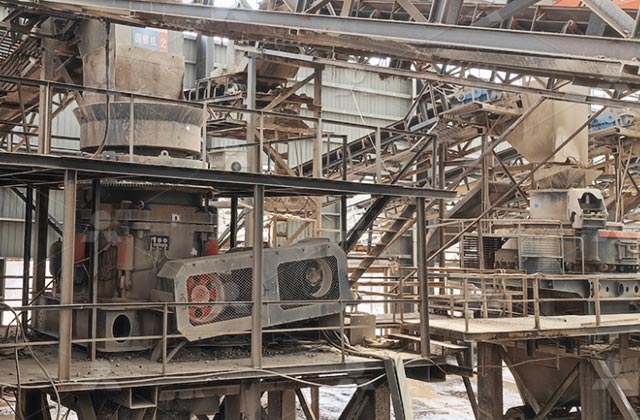Designing a 700t/h basalt crushing production line requires careful consideration of various factors including the hardness, abrasiveness, and size of the basalt, as well as the desired final product specifications. Here’s a comprehensive plan for such a production line:

- Primary Crushing:
- Utilize a robust jaw crusher capable of handling large chunks of basalt. A jaw crusher with a large feed opening and high crushing capacity would be ideal for this stage.
- Opt for a jaw crusher with a hydraulic adjustment system to control the size of the crushed material and ensure uniformity.
- Secondary Crushing:
- Employ a cone crusher as the secondary crushing equipment. Cone crushers are efficient in reducing large-sized basalt to smaller sizes.
- Choose a cone crusher with a high crushing ratio to produce finer aggregates.
- Implement a closed-circuit system with a vibrating screen to control the size of the final product.
- Tertiary Crushing:
- Integrate a vertical shaft impact (VSI) crusher for tertiary crushing. VSI crushers are effective in shaping the aggregates and producing cubical particles.
- Select a VSI crusher with adjustable feed and discharge openings to achieve the desired particle size distribution.
- Install a magnetic separator to remove any iron impurities from the crushed basalt.
- Screening and Classification:
- Employ multiple vibrating screens with different mesh sizes to classify the crushed basalt into various fractions.
- Utilize high-capacity vibrating screens equipped with efficient screening surfaces to maximize throughput.
- Incorporate a scalping screen at the primary crushing stage to remove fines and improve the overall efficiency of the production line.
- Material Handling:
- Implement a robust conveyor system to transport the crushed basalt between different stages of the production line.
- Install belt scales and metal detectors along the conveyor belts to monitor the flow of material and prevent any potential issues.
- Utilize mobile conveyors for flexibility in relocating equipment and optimizing material flow.
- Dust Suppression and Environmental Protection:
- Install dust suppression systems, such as water sprayers or mist cannons, to minimize airborne dust during the crushing process.
- Implement soundproofing measures and vibration isolation devices to reduce noise and ensure compliance with environmental regulations.
- Design the production line layout to minimize the visual impact on the surrounding environment and preserve the natural landscape.
- Automation and Control:
- Implement a centralized control system to monitor and control the entire production line.
- Integrate sensors and automation technologies to optimize equipment performance and energy efficiency.
- Employ remote monitoring and diagnostics to detect potential issues and schedule preventive maintenance activities.
- Safety Measures:
- Provide comprehensive safety training for all personnel involved in operating and maintaining the production line.
- Install safety guards, emergency stop buttons, and warning signs to prevent accidents and ensure a safe working environment.
- Conduct regular safety inspections and risk assessments to identify and mitigate potential hazards.
By following these design principles, a 700t/h basalt crushing production line can be efficiently and safely operated to meet the desired production targets while ensuring high-quality aggregates for various construction applications.
